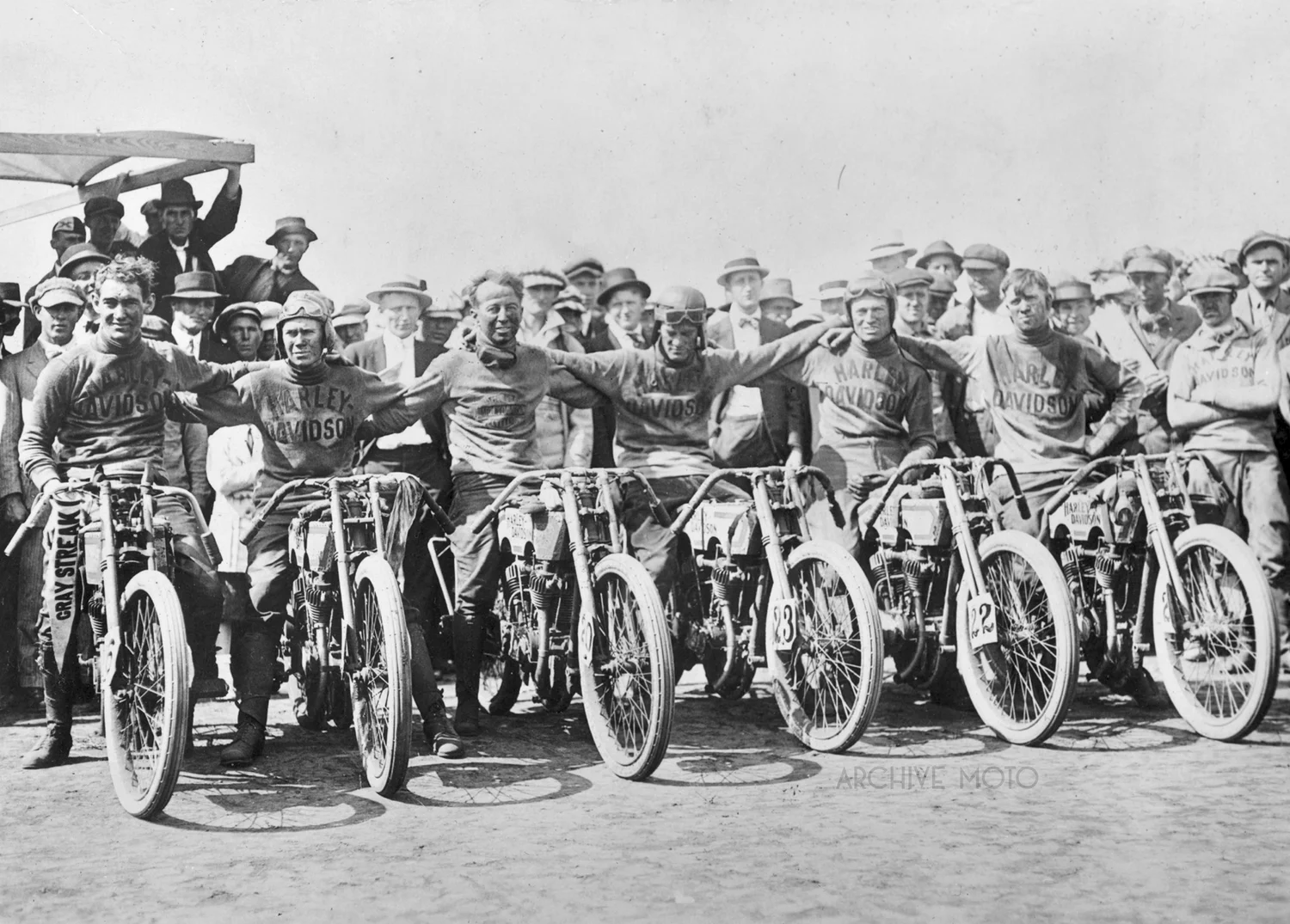19 year old Morty Graves and 29 year old Arthur Mitchell with their factory NSU racers at the Los Angeles Coliseum, America's first board track motordrome in early Spring, 1909.
One of my absolute favorite pioneer American motorcycle racers, Morty Graves was often times the man to beat in the earliest days of professional competition. With his refined natural skill and hollywood charm, Graves competing for the best manufacturers, and the young man they called “Millionaire Morty” piloted many of what would become the most rare and iconic racing motorcycles in the world.
Graves initially began riding motorcycles in 1906 and almost immediately began racing stock machines. In 1907 he acquired a factory tuned Indian racer from Hedstrom's shop, and though he would sport a number of different manufacturer’s jerseys throughout his career, Indian seems to have been his most favored. He quickly became one of the regulars at Los Angles’ Agriculture Park, the white-hot nucleus of American motorcycle racing just before the big bang of racings golden age. Naturally, when famed cycle champ and velodrome builder Jack Prince came to LA in early 1909 to construct America’s first board track motordrome, Graves was assured a spot on the line.
German motorcycle manufacturer NSU was a relatively new import in the US market at the time. Billed as the Mercedes of motorcycles, the machines were highly engineered and powerful, though cumbersome, and the brass at NSU was eager to capitalize on victory on American tracks. Having been racing motorcycles since 1905 following a successful cycle racing career, Arthur Mitchell was a veteran rider by 1909 and a forefather of the LA racing scene. Mitchell had secured a contract in late 1908 to ride for NSU, Graves was brought onboard shortly thereafter and the two awaited delivery of their new racing machines from the German company for the start of the 1909 season.
Prince’s grand experiment, the Los Angeles Coliseum was a 2/7-mile wooden oval with 48 degree banking on each end, it was America’s first motordrome. In late February, early March 1909 Mitchell and Graves received their new 61ci, glowing white NSU racers. The first practice session at the newly completed Los Angeles Coliseum was held in early March and the pair put a lump in the throats of the top riders as they hit unofficial record speeds upwards of 75 mph. America’s first professional racers Paul “Daredevil” Derkum, Jake DeRosier, Fred Huyck, and Charlie Balke watched the cumbersome NSU team rocket around the new board track in amazement. On March 14, 1909 the Coliseum opened its gates to the public and the age of the American motordrome began.
Having a large 3.5" belt drive assembly, with the pulley reportedly measuring over 5 inches wide, the NSU provided the wily young Graves an unique advantage. In his own words, Graves described how the abnormally wide pulley allowed him to enter into the Coliseum's banked corners at nearly full clip, and at a much steeper angle than other riders could. When most would slide out the NSU’s pulley would catch the track and hold the weight in the turn, allowing Graves and the top heavy machine to take corners at speeds over 70 mph as he laid the bike low onto its pulley. As a result, the 19 year old Graves was a crowd favorite, consistently landing somewhere on the podium, including a few first place finishes, and setting a handful of world’s records onboard his bulky but fast NSU.
This photo comes from that very moment in time, when a 19 year old hot shot and his veteran mentor just so happened to be standing on the very spot where it all began. Morty Graves, a young man with a beastly machine established himself in the dayS following this photograph in the Spring of 1909 on a thrilling new track that allowed men to take flight on two wheels. Graves would move on from his contract with NSU by May of 1909 to ride for the premier motorcycle racing team in the world, Indian Motocycles, but it was his antics onboard the NSU at America’s first motordrome that earned him his place amongst the founders of America motorcycle racing.






